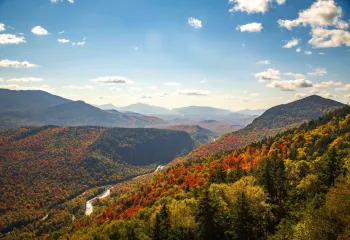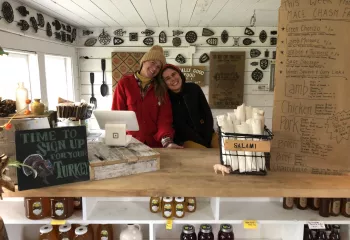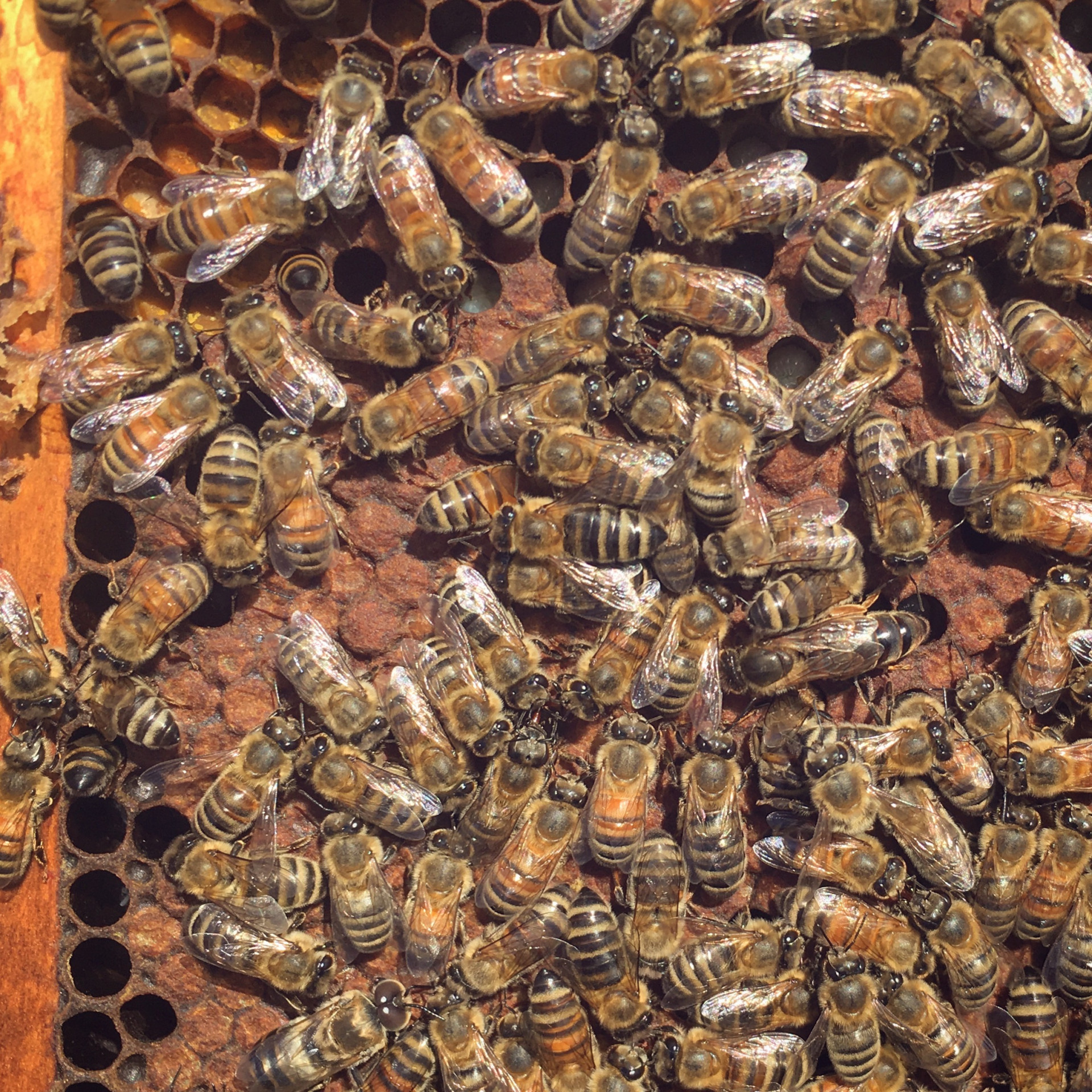
For Bianca Braman, beekeeping is a sweet way of life. We recently had the chance to ask her a few questions about the fascinating world of beekeeping. After reading Bianca's responses, we can't help pollen in love with bees.
Tell us a little about yourself. What got you into beekeeping?
I grew up in the rural Adirondacks in Stony Creek, New York. I believe that my upbringing fostered a love for the outdoors and for animals and insects of all kinds. My perpetual love for learning is comfortable with the Earth’s creatures, as there is so much to be learned from them, and so little we truly know. Honey bees and beekeeping specifically came into my life by way of a sparked interest in caring for a colony of insects. The idea fascinated me. After reading Dadant’s First Lessons in Beekeeping, I found my way to the Champlain Valley Beekeepers Association of which I became a member. After a year of club lessons, and much more reading, I went on to get two colonies of my very own. Later on through the club I met my current employer, Michael Palmer, the owner of French Hill Apiaries. This year was my third working for Mike and I’m very grateful for it. Working in commercial beekeeping is like learning bees through osmosis. We see so many colonies each day in so many different situations it has taught me quickly, while also leaving me searching for more, perhaps forever. I still maintain five colonies of my own, three of which are in the Adirondacks in Jay, Upper Jay, and Keene. My full time spring/summer/fall job is out of St. Albans, Vermont at French Hill Apiaries which has colonies on both the Vermont and northern New York sides of Lake Champlain. My personal business goal is to begin my own Queen Rearing operation next summer. From there I will build my version of an apiary and someday be a full time entrepreneur!
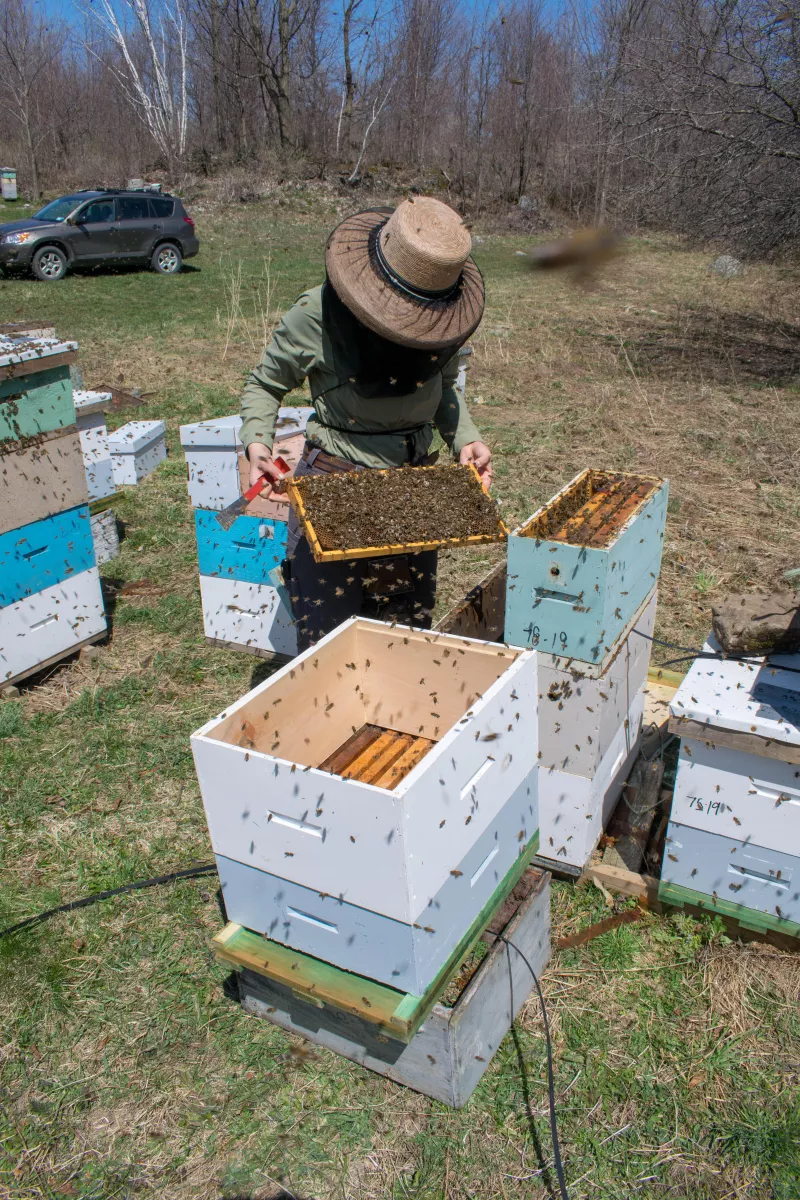
Can you give us a brief description of what goes into beekeeping? Honey obviously doesn’t just appear in a jar. How do we get from hive to store?
Beekeeping, like any type of farming, requires many years of experience to begin truly understanding. We are so connected to the weather and the Earth that seeing one or two or even five years alone are not enough to reference. After many, many years beekeepers still do not know many things. This is the true magic of the wild creature. Every beekeeper practices different management styles. There are so many fine-tuned nuances that it is impossible to find any two people who do everything exactly the same.
A very brief vision of my year in bees begins in early spring with check-ins to see about the well-being of each colony. We then move on to feeding those in need and then unwrapping the tar papers with which they’ve been shrouded for the winter. At this point I would test for varroa mites and intervene if the numbers are high. If not, I will add two honey supers (boxes) immediately. Then I reverse, which is a complete inspection and reorganization of the brood nest, placing the nest at the bottom of the stack and all of the space over top. This allows for an intense cleaning of the bottom board and removal of any old frames as well. A couple of weeks later I will add two more supers depending on strength. More will be added to stronger colonies. At this point (early June) we launch into queen rearing processes and making more bees for the next year. In July, we begin the requeening process, removing any queens who are failing. Then, in late July and August, we begin the harvest. Here, mites are assessed again and dealt with (many different methods) if numbers are high. After removing the honey boxes (anywhere from 10-80 pounds but typically 30-50) from the colonies, putting the frames through an extraction process with a large centrifuge, and then putting all of the honey into food safe containers (jars, buckets, drums), the year begins to wind down into fall time - weighing colonies to see if they need any extra food to get through winter, organizing and cleaning in the yards and shop, and finally wrapping the colonies again in their tar paper shrouds, and adding a piece of two inch foam to the top to cozy up for cold months ahead. During these colder months beekeepers finally settle down enough to pour honey into jars, apply labels, and bring to stores.
Most people do not react well to the sight of swarming bees. Were you afraid of the bees when you first started out as a beekeeper? What would you say to someone who is afraid of bees?
I understand the instinctual fear of bees by humans. It is natural to feel wary of stinging insects. There are times when I have felt afraid of them but that was not when I first began. When just starting out, my obsession with them was so thick that it could not be broken by stings. Even though when I began I would get severely swollen and itchy, I kept going. The beauty in being surrounded by their flight and in the smells of the hive were like heaven itself. I felt love rather than fear. If someone is afraid I would tell them as I always tell myself that it is mind over matter. So long as you are not allergic, the bee’s sting will be soon forgotten compared to the long lives we live. I have been stung thousands of times and in this moment the pain does not bother me. I no longer swell or itch. My love for them allowed me to push past.
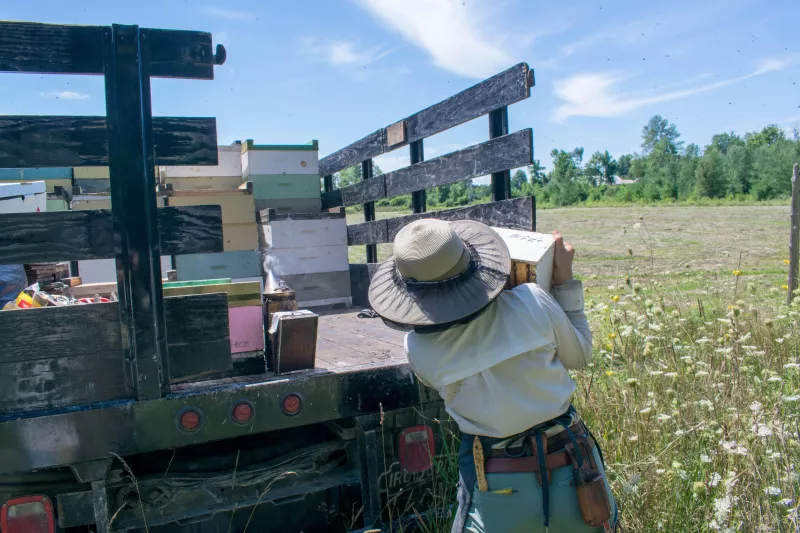
Where did you first get your bees from?
I got my first bees in the form of two nucleus colonies from Dick Crawford, who is the president of Champlain Valley Beekeepers Association. I was proud to have waited and researched for my first couple of years as bees do require a lot more attention than one would believe!
We all always use the phrase "as busy as a bee.” Do bees sleep or rest at all? It seems like they are always on the move! How busy are you when honey production is at its peak?
Research has found that bees may spend as much as 6 hours a day doing absolutely nothing. In the winter they cluster tight and flex / pulse their flight muscles to keep warm and constantly cycle out the center to keep everyone warm. For me sometimes it feels as though I have accidentally blinked in May and now it is October. The season is all very busy. Honey harvest itself is heavy and very busy but it’s always wonderful to see and experience the honey. It is a true miracle.
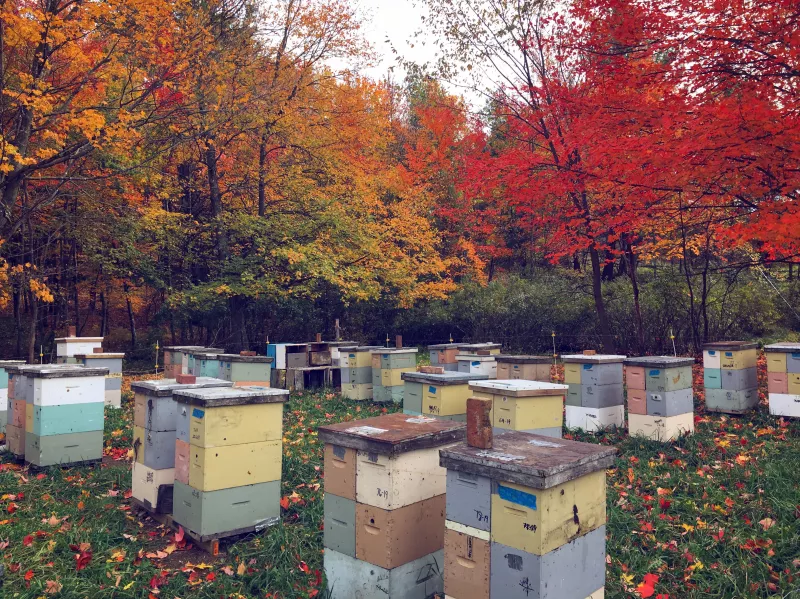
Bees, as it turns out, are kind of fair-weather workers. They are more active on sunny days. Do you find that you’ve become more sensitive or tuned in with the environment since starting to work with bees?
Similarly to the bees, I’ve had no choice to become in tune to the weather. We do different jobs on rainy days. We feel worry during droughts and periods of too much rain. We eat more during the fall and wake up earlier in the spring. My life has completely changed since finding my way to beekeeping every day. I genuinely love my connection and sensitivity to the earth and her ways. It is a gift.
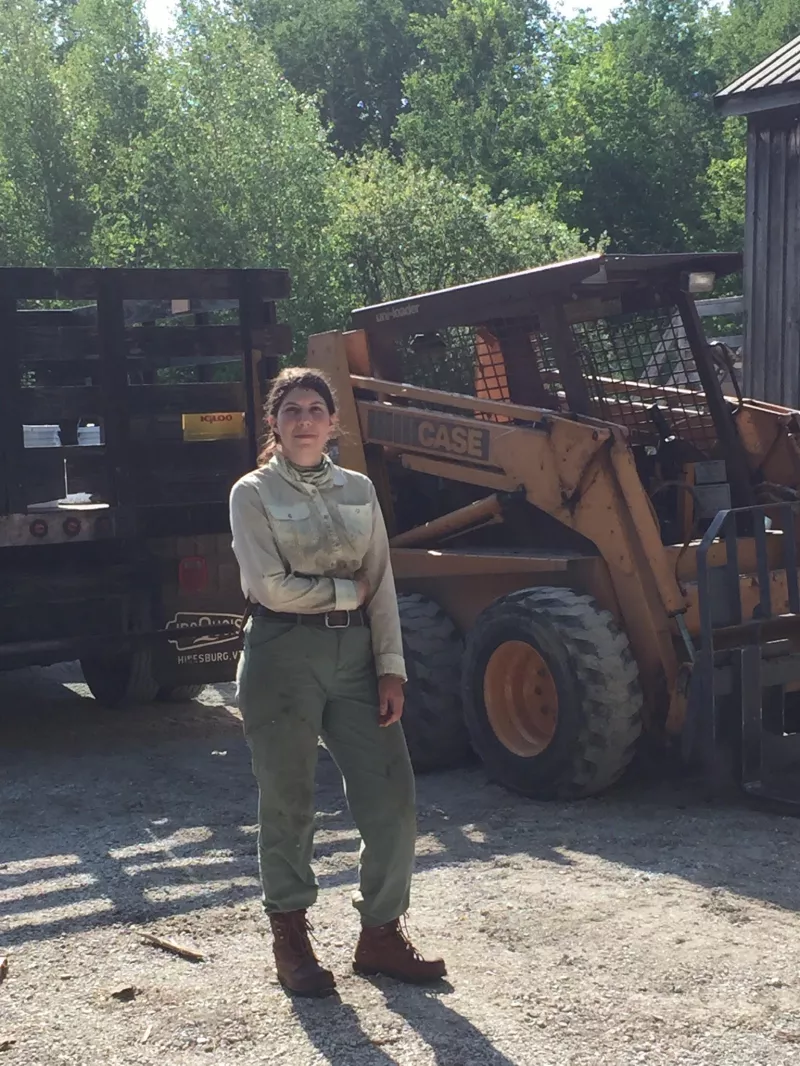
How does the climate in the Adirondacks affect bees?
Beekeeping in the Adirondacks/High Peaks Region proves to be quite difficult. We lose about two weeks on both ends of the season which requires more feeding because there is less forage. In a place that is well planted and constantly cared for beekeeping in the High Peaks could be easier but never perfectly ideal. It is truly a rugged and coniferous place. It has been a (rocky) journey learning to keep bees in such a mountainous place. Seeing the ease that comes in the valleys I can see that they certainly prefer a place where there is lots to be found for food, of course! There are many places in the Southern Adirondacks and maybe Malone area that could be more ideal for beekeepers. The Bark Eater Inn (Meghan & Tyler) do such a wonderful job with planting and upkeep that keeping bees there was never an issue. They are truly pollinator protectors!
What do you do in winter? What is your favorite part about living in the Adirondacks?
For the last two years I have spent my winter on ski patrol at Whiteface Mountain. I absolutely love my job at Whiteface as it keeps me in tune with my love for the outdoors, skiing, and community. It also perfectly interchanges with my beekeeping job; they almost trade off by the day. This winter things are going to be different due to COVID but my love for that mountain will never change. It is a magical place. I could not honestly say one favorite part about the Adirondacks. Having spent almost my entire life here, it is who I am. I will say though that the swimming is incredibly special. The feeling of peace and privacy that comes from connection with nature in the remote Adirondacks is like none other. Most of all though, the community. There is NOTHING like the communities of locals in all of the Adirondack small towns. Smiles, genuine kindness, soul, heart, beauty unmatched, integrity. I could go on but you don’t know unless you know. And when you do, there’s no going back! It steals your heart.
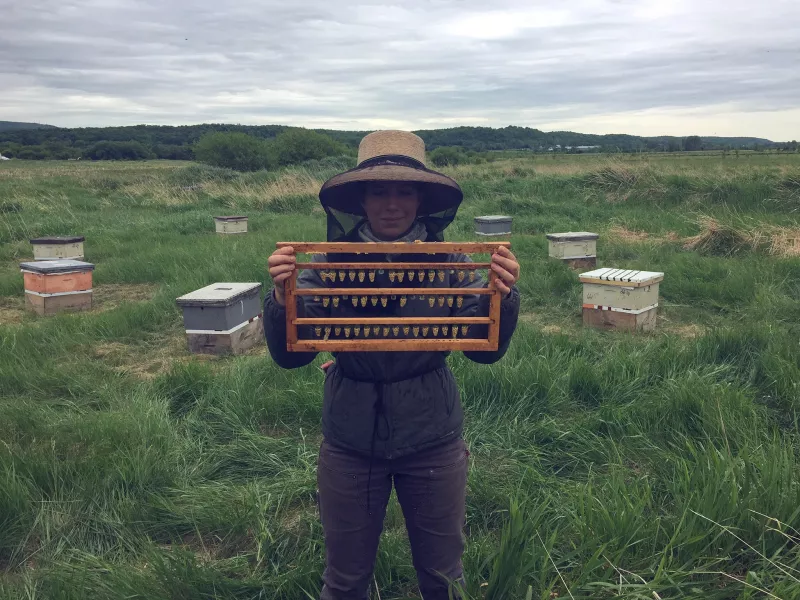
We think “pollen pants” are the cutest thing ever! What is your favorite thing about bees or beekeeping?
My favorite thing about beekeeping oddly enough are the smells. My love for the smells all began one night moving bees with Mike. We were standing beside a truck load of nucleus colonies and Mike asked “can you smell it?” Of course I could. The smell was their brood - a sweet, musky, freshly baked bread sort of smell you can never get enough of. From there I smelled it all: the anger pheromone which is like fake banana, to their homing scent which is of lemongrass, their sweet honeys, and so on. The smells fascinate me. I am in love with it.
Where can we get your honey?
At this time our Champlain Valley and northern New York Honey (Ellenburgh, Mooers, Mooers Forks, Champlain, Chazy, & Beekmantown) is available at Sugar House Cremery in Upper Jay, The Green Goddess in Lake Placid (Main & Saranac Ave), Nori's in Saranac Lake, East Branch Organics in Keene, and Maranville’s Garage in Bolton Landing.
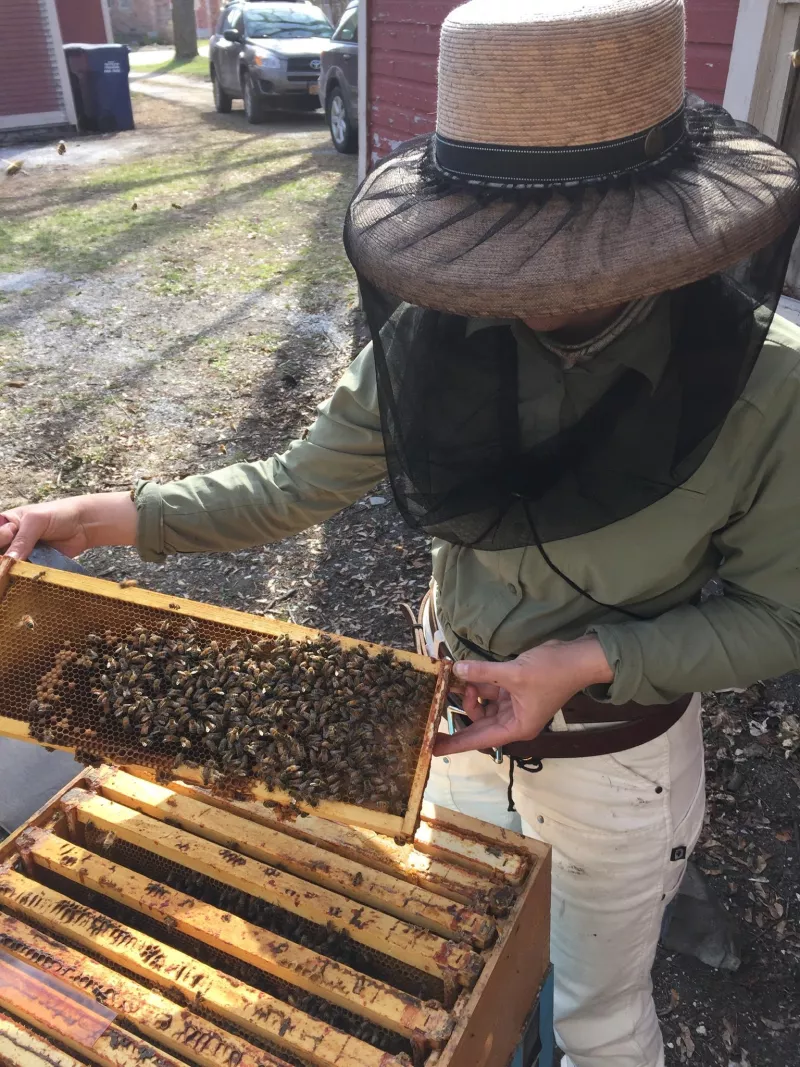
Come visit the Whiteface Region, where the farm tours are sweet and the adventures are always un-BEE-lievable.
(Photos of Bianca are by Adam Foster Collins and used with permission.)

